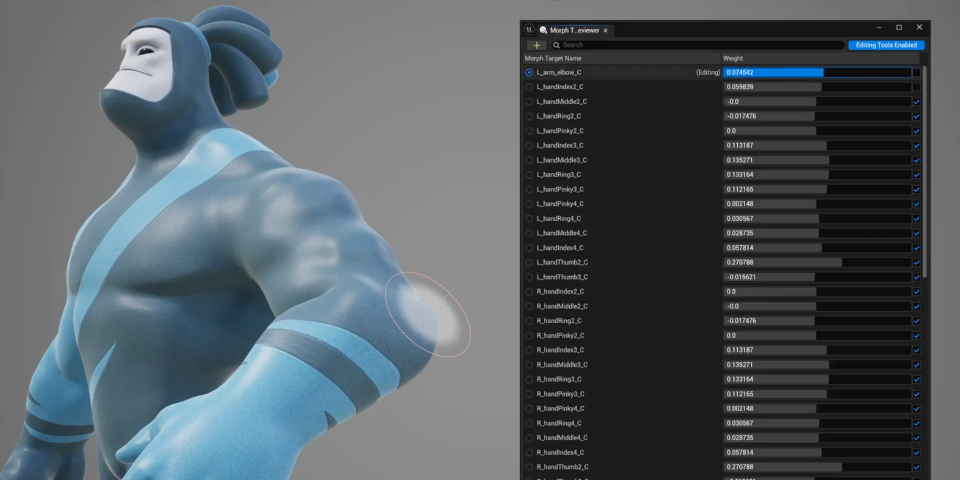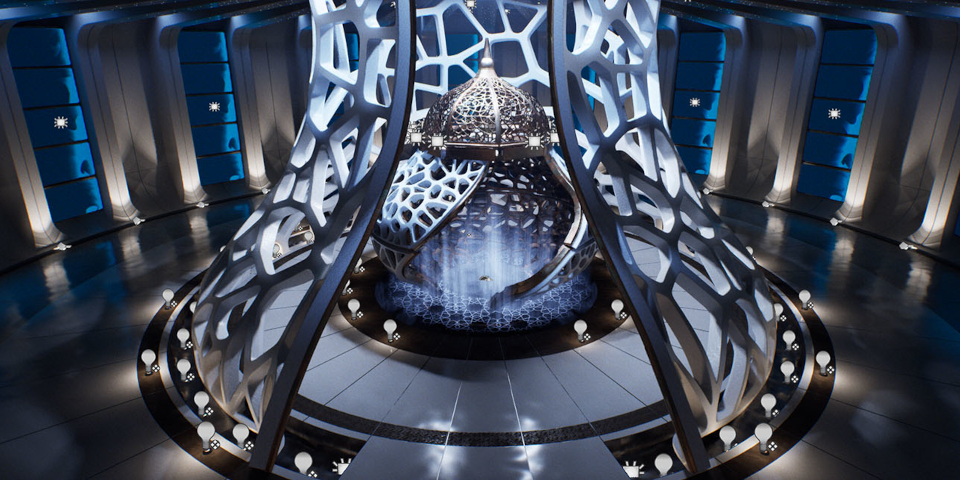Unreal Engine 5.7: five key features for CG artists

Epic Games has released Unreal Engine 5.7, the latest version of the game engine and real-time renderer, in public preview.
If Epic follows its usual schedule, the final release should follow some time this month, so ahead of it, we’ve picked out some of the highlights.
Below, you can read our pick of five key features in Unreal Engine 5.7 for CG artists, as opposed to programmers or game designers, along with a summary of the other key changes.
We’ll update this story once the final release becomes available.
1. Procedural Vegetation Editor: create your own custom Nanite-ready trees (Experimental)
The PCG – Unreal Engine’s Procedural Content Generation framework for creating anything from biomes to entire worlds – becomes officially production-ready in Unreal Engine 5.7.
We covered the PCG when it was first introduced in Unreal Engine 5.2, so here, we’re focusing on another tool that uses the same core technology.
The Procedural Vegetation Editor is an experimental new plugin that lets artists create their own procedural 3D trees inside Unreal Engine, using a PCG-based node graph.
It seems to be intended for customizing existing assets, such as the free Quixel Megaplants on Fab, rather than authoring models from scratch, as you might in third-party tools like SpeedTree.
Having imported a base asset, users can modify the overall shape of the tree using gravity, scale and carve operators, and adjusting parameters to control branch and leaf distribution.
The custom asset can be exported as either a static or skeletal mesh, and supports Unreal Engine 5.7’s experimental new Nanite Foliage system, which makes it possible to set up procedural wind animation.
Since the workflow is node-based, it should also be straightforward to create variants of each tree by making relatively small changes to the underlying graph.
2. Rig Mapper: transfer motion between MetaHumans and ARKit characters (Experimental)
MetaHumans get a number of updates in Unreal Engine 5.7, but one particularly interesting change is the new Rig Mapper in the IK Regargeter.
It transfers animation between MetaHumans and ARKit, Apple’s augmented reality API – used by a number of iPhone and iPad mocap apps.
As well as making it easier to retarget ARKit animations to MetaHumans, Rig Mapper makes it possible to use facial animation generated by MetaHuman Animator on ARKit characters.
According to Epic, while “additional curve adjustments can improve realism”, even in its early state, the tool generates pretty good results out of the box.
In addition, MetaHuman Creator, Epic’s plugin for creating MetaHumans – integrated into Unreal Editor since Unreal Engine 5.6 – is now available on Linux and macOS as well as Windows, and there are new APIs for automating MetaHuman creation using Python scripting or Blueprints.

3. Morph Target Viewer: view morph targets and blendshapes inside UE5 (Experimental)
Epic Games added the option to sculpt corrective morphs and facial blendshapes inside Unreal Engine’s Skeletal Mesh Editor in Unreal Engine 5.6, but Unreal Engine 5.7 brings a number of important workflow improvements.
Character riggers can now move instantly between sculpting blendshapes and placing bones or painting weights on a Skeletal Mesh.
A new Morph Target Viewer (shown above) makes it possible to view all of the morph targets on a character, adjusting the intensity of each one with weight sliders.
4. Improved retargeting: retarget animation from giants to dwarves (Experimental)
Animators get a number of important workflow improvements in Unreal Engine 5.7, but there are also interesting new options for animation retargeting.
One is Spatially Aware Retargeting (shown above), which reduces self-collision when retargeting animation between characters with different body proportions.
A separate set of updates to the IK Retargeter provide new options when retargeting animation between characters of different scale.
One is the option to define Crotch Height to prevent the pelvis from hitting the ground; another is the option to add a Floor Constraint to feet to maintain vertical position close to the floor.
Collectively, the changes should reduce the need for manual clean-up of retargeted animation, even in extreme cases like transferring motion from a giant to a dwarf.
5. AI Assistant: solve technical queries with natural-language commands (Experimental)
Finally, one important new feature that isn’t in the current preview build, but which is planned for the final release, is the new AI Assistant.
Like its counterpart in Unity, which is simply called Assistant, it’s a generative AI tool for the kinds of tasks where you might use external LLMs like ChatGPT.
For programmers, the most obvious is writing code, but for artists, that probably means solving technical queries.
Available via a dedicated panel in the Unreal Editor, the AI Assistant is capable of providing step-by-step instructions in response to plain-language questions.
The built-in version uses the same AI model used in the Developer Community for searching the online documentation but, according to Epic, is capable of operating directly in context.

Updates to other core toolsets
The new features listed above are only a small fraction of the hundreds included in Unreal Engine 5.7, so to conclude, let’s take a quick look at what’s new in the key toolsets.
For authoring materials, Substrate, the modular, principled-BSDF-based framework introduced in Unreal Engine 5.2, is now production-ready.
For lighting, MegaLights – the ‘Nanite of lights’ introduced in Unreal Engine 5.5 – reaches beta, with support for directional lights, Niagara particle lights, translucency, and hair strands.
Changes to rendering include support for Nanite in First Person Rendering, which is now production-ready, and experimental support for SMAA (Subpixel Morphological Anti-Aliasing).
Rigging artists get a new Dependency View in Control Rig.
There are also a lot of workflow improvements to animation, including Selection Sets, a unified Constraint window, and updates to the Media Viewer for viewing reference footage.
The changes to the simulation tools are individually smaller, but there are a lot of them, with updates to Chaos Destruction, Chaos Cloth, Chaos Hair, Chaos Fluids and the Visual Debugger.
In the industry-specific toolsets, the motion design tools introduced in Unreal Engine 5.4 are now production-ready, and the Text3D object now supports rich text.
VFX artists get more control over output file naming in Movie Render Graph, per-render-layer EXR metadata for better compatibility with Nuke, and extended support for USD in Interchange.
Visualization professionals get new viewport modes for inspecting complex mechanical models, and better support for clipping planes in the orthographic viewports.
There are also updates to virtual production, including the return of Composure, the real-time layer-based compositing system available in Unreal Engine 4.
When using Live Link to stream motion capture data into Unreal Engine, it is now possible to pause and unpause the stream, and to preview animation directly in the viewport.
Developers also get a number of new features, including updates to incremental cooking and a new build health dashboard. You can find details via the links at the foot of this story.
System requirements and availability
Unreal Engine 5.7 is available in preview for 64-bit Windows, macOS and Linux.
For non-interactive content, the software is free to users with revenue under $1 million/year. For larger studios, subscriptions cost $1,850/seat/year, including Twinmotion and RealityCapture.
For games developed with the engine, Epic takes 5% of the gross royalties after the first $1 million generated.
Read an overview of the new features in Unreal Engine 5.7 on Epic Games’ forum
Read more about the new features in Unreal Engine 5.7 on the product roadmap
Have your say on this story by following CG Channel on Facebook, Instagram and X (formerly Twitter). As well as being able to comment on stories, followers of our social media accounts can see videos we don’t post on the site itself, including making-ofs for the latest VFX movies, animations, games cinematics and motion graphics projects.
